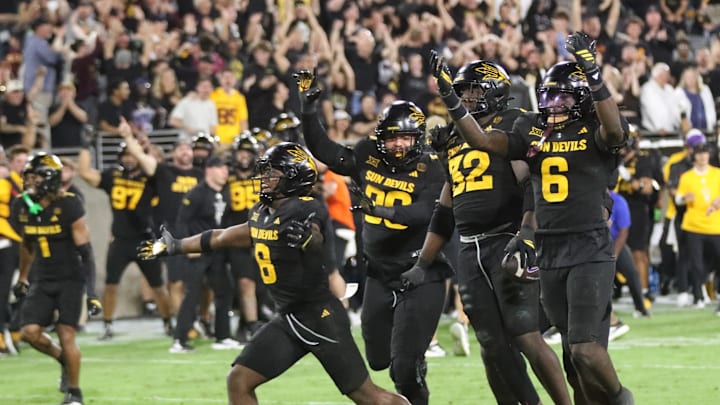Arizona State’s game plan this season focuses on playing fast; keeping the tempo high, forcing defenses to stay off balance, and creating mismatches before opponents can adjust. However, beating Utah’s disciplined secondary will require more than just playing fast. The stars such as Sam Leavitt, Jordyn Tyson, C.J. Fite, Xavion Alford, and Keyshaun Elliott will be required to play with schematic variety, matchup leverage, and clutch execution in ASU.
Leavitt and Tyson: The Engine and the Spark
The obvious engine of the ASU is Sam Leavitt. Having already generated more than 1,000 passing yards, eight touchdowns, and comparing them to three interceptions. He is already striking the right balance between risk and tempo. He can drive the ball forward, yet his speed with it also makes him a two-dimensional player that cannot be ignored by defenders, which forces defenders to respect both his arm and legs. That two-danger kind of approach adds more pressure on the secondary of Utah, particularly when Leavitt rushes tempo.
The matchup problem is still Jordyn Tyson. His space circuit, his burst and catch radius are his weapons. The corners of Utah will be forced to choose: either shadow (dangerous) one-on-one or bracket him with safety help (leaving the territory open somewhere). ASU needs to apply concepts of motion, rub routes, and timing to liberate Tyson in space. The kind of throws that can turn 5-yard gains into 20+ yard rewards.
Defense Holds the Key: Fite, Alford, and Elliott
To crack the Utah shell, ASU will have to provide them with space by their D-lines; C.J. Fite can create push and chaos, which will compel Utah to make decisions faster, and a tempo offense will not be able to work without this. In case Fite can make pockets sink or delay the throwing, the timing window of Leavitt becomes smaller.
Xavion Alford is the center-field safety who can penalize overcommitments. His coverage instincts and range enable ASU to be more aggressive underneath. When safeties creep up to help corners, Tyson’s routes beyond the sticks become even more dangerous.
Keyshaun Elliott, who has one of the most promising linebacker presences in ASU, will be forced to train his coverage and run support. If he misreads a play-action or gets fooled by misdirection, Utah can exploit seams through the middle — exactly the kind of space ASU wants to dominate.
Tempo in Itself Is Not Enough, but the use of it
The pace of Arizona State is not a gimmick but a means. The Sun Devils should stack Utah's defense with structure, quick game, deep strikes, under routes, perimeter, and tight-window targets to crack the defense of the Utah team. Utah will have a hard shell, but should ASU has them on constantly the whole field, the burden will be evident in comparisons.
Provided that the Leavitt times toss windows, Tyson leads in space, Fite upsets, Alford polices, and Elliott tends his gap obligations, the pace of ASU may not merely crack the shell of Utah, but may break it.
